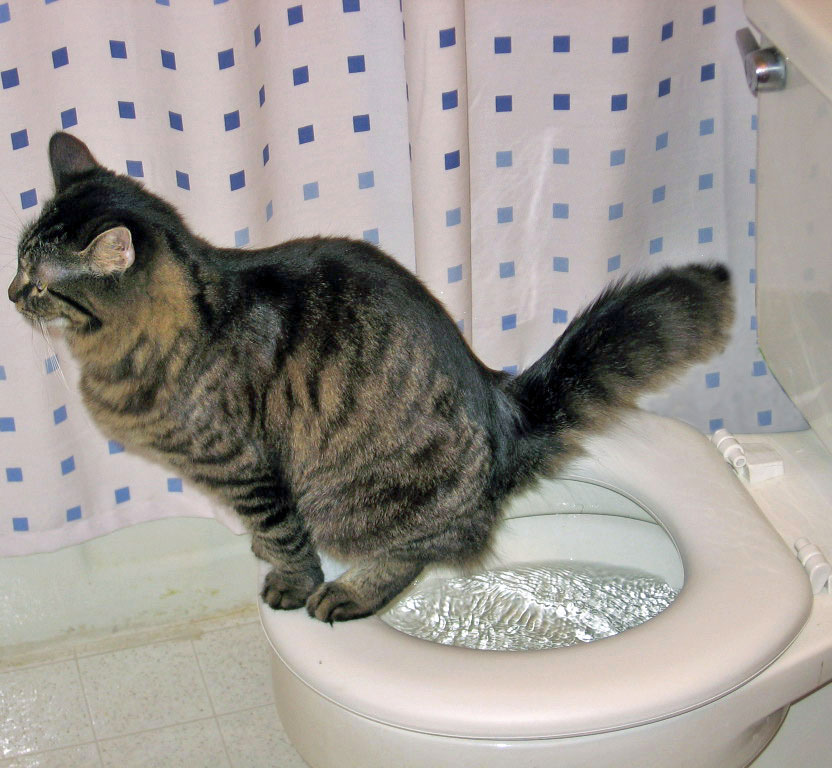Reasons Flushing Cat Poop Down Your Toilet Isn't a Good Idea - Tips for Safer Disposal
Reasons Flushing Cat Poop Down Your Toilet Isn't a Good Idea - Tips for Safer Disposal
Blog Article
What are your concepts about Can You Flush Cat Poo or Litter Down the Toilet??

Introduction
As feline proprietors, it's essential to be mindful of how we take care of our feline pals' waste. While it may seem convenient to purge pet cat poop down the toilet, this method can have detrimental effects for both the environment and human health and wellness.
Alternatives to Flushing
Fortunately, there are much safer and a lot more liable means to take care of cat poop. Think about the adhering to choices:
1. Scoop and Dispose in Trash
One of the most common method of getting rid of cat poop is to scoop it into a biodegradable bag and throw it in the garbage. Make sure to utilize a dedicated clutter scoop and get rid of the waste without delay.
2. Usage Biodegradable Litter
Opt for eco-friendly feline trash made from materials such as corn or wheat. These clutters are eco-friendly and can be securely taken care of in the garbage.
3. Hide in the Yard
If you have a lawn, think about hiding feline waste in an assigned area far from vegetable gardens and water resources. Make sure to dig deep sufficient to avoid contamination of groundwater.
4. Mount a Pet Waste Disposal System
Buy a family pet garbage disposal system particularly made for pet cat waste. These systems make use of enzymes to break down the waste, lowering smell and environmental influence.
Health Risks
In addition to ecological worries, purging pet cat waste can likewise position health threats to people. Cat feces might have Toxoplasma gondii, a parasite that can cause toxoplasmosis-- a possibly severe illness, specifically for expectant women and individuals with weakened body immune systems.
Environmental Impact
Purging feline poop introduces harmful microorganisms and parasites right into the water system, presenting a significant danger to aquatic ecological communities. These contaminants can adversely affect aquatic life and concession water quality.
Verdict
Accountable pet dog possession extends past providing food and sanctuary-- it also entails appropriate waste management. By avoiding flushing feline poop down the commode and selecting alternative disposal techniques, we can minimize our environmental impact and protect human health and wellness.
Why Can’t I Flush Cat Poop?
It Spreads a Parasite
Cats are frequently infected with a parasite called toxoplasma gondii. The parasite causes an infection called toxoplasmosis. It is usually harmless to cats. The parasite only uses cat poop as a host for its eggs. Otherwise, the cat’s immune system usually keeps the infection at low enough levels to maintain its own health. But it does not stop the develop of eggs. These eggs are tiny and surprisingly tough. They may survive for a year before they begin to grow. But that’s the problem.
Our wastewater system is not designed to deal with toxoplasmosis eggs. Instead, most eggs will flush from your toilet into sewers and wastewater management plants. After the sewage is treated for many other harmful things in it, it is typically released into local rivers, lakes, or oceans. Here, the toxoplasmosis eggs can find new hosts, including starfish, crabs, otters, and many other wildlife. For many, this is a significant risk to their health. Toxoplasmosis can also end up infecting water sources that are important for agriculture, which means our deer, pigs, and sheep can get infected too.
Is There Risk to Humans?
There can be a risk to human life from flushing cat poop down the toilet. If you do so, the parasites from your cat’s poop can end up in shellfish, game animals, or livestock. If this meat is then served raw or undercooked, the people who eat it can get sick.
In fact, according to the CDC, 40 million people in the United States are infected with toxoplasma gondii. They get it from exposure to infected seafood, or from some kind of cat poop contamination, like drinking from a stream that is contaminated or touching anything that has come into contact with cat poop. That includes just cleaning a cat litter box.
Most people who get infected with these parasites will not develop any symptoms. However, for pregnant women or for those with compromised immune systems, the parasite can cause severe health problems.
How to Handle Cat Poop
The best way to handle cat poop is actually to clean the box more often. The eggs that the parasite sheds will not become active until one to five days after the cat poops. That means that if you clean daily, you’re much less likely to come into direct contact with infectious eggs.
That said, always dispose of cat poop in the garbage and not down the toilet. Wash your hands before and after you clean the litter box, and bring the bag of poop right outside to your garbage bins.
https://trenchlesssolutionsusa.com/why-cant-i-flush-cat-poop/

I was guided to that editorial on Can You Flush Cat Poo or Litter Down the Toilet? from someone on our other site. Sharing is caring. One never knows, you could be doing someone a favor. Thank you so much for your time invested reading it.
Book Your Installation Report this page